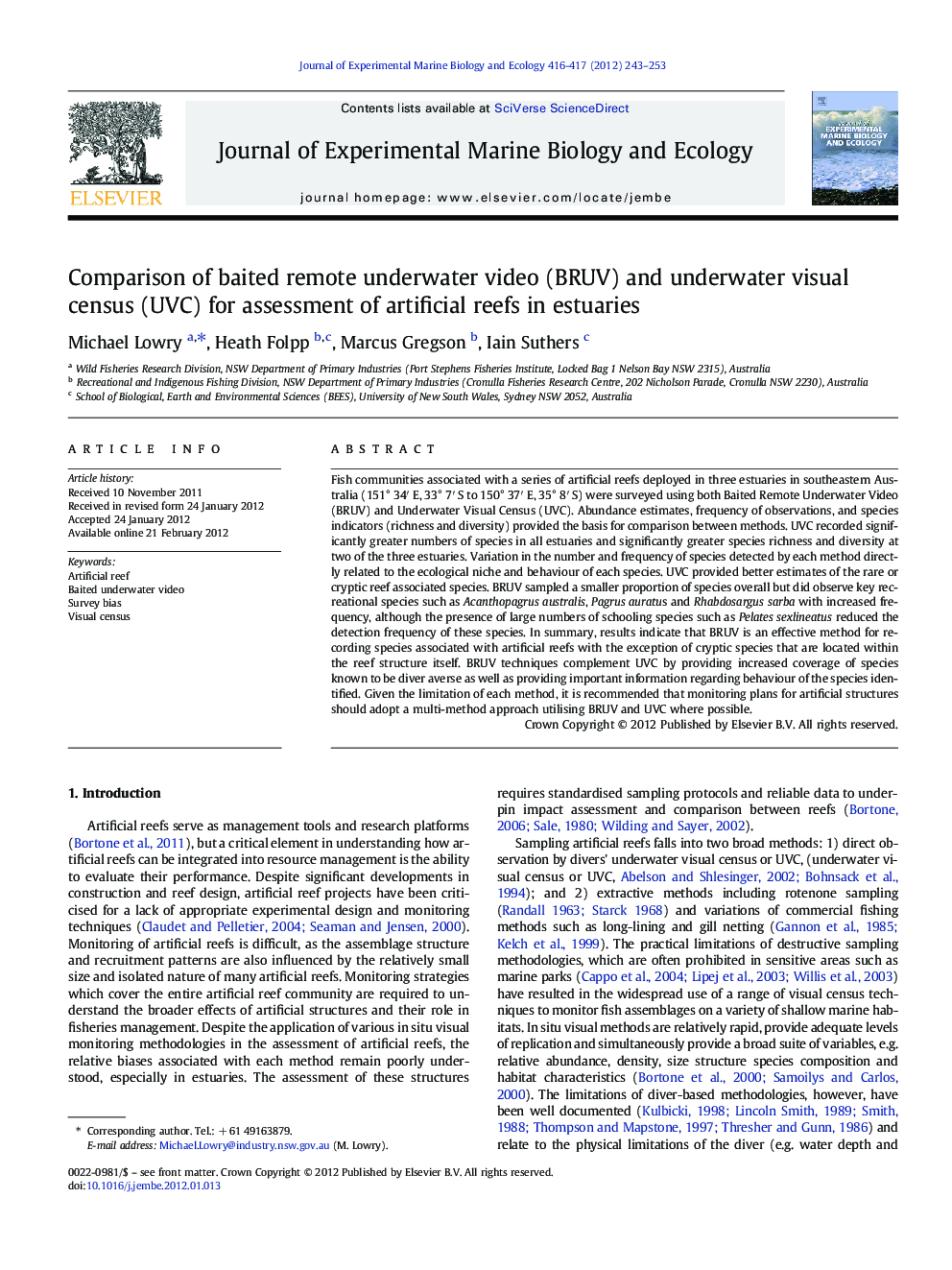| Article ID | Journal | Published Year | Pages | File Type |
|---|---|---|---|---|
| 4396116 | Journal of Experimental Marine Biology and Ecology | 2012 | 11 Pages |
Fish communities associated with a series of artificial reefs deployed in three estuaries in southeastern Australia (151° 34′ E, 33° 7′ S to 150° 37′ E, 35° 8′ S) were surveyed using both Baited Remote Underwater Video (BRUV) and Underwater Visual Census (UVC). Abundance estimates, frequency of observations, and species indicators (richness and diversity) provided the basis for comparison between methods. UVC recorded significantly greater numbers of species in all estuaries and significantly greater species richness and diversity at two of the three estuaries. Variation in the number and frequency of species detected by each method directly related to the ecological niche and behaviour of each species. UVC provided better estimates of the rare or cryptic reef associated species. BRUV sampled a smaller proportion of species overall but did observe key recreational species such as Acanthopagrus australis, Pagrus auratus and Rhabdosargus sarba with increased frequency, although the presence of large numbers of schooling species such as Pelates sexlineatus reduced the detection frequency of these species. In summary, results indicate that BRUV is an effective method for recording species associated with artificial reefs with the exception of cryptic species that are located within the reef structure itself. BRUV techniques complement UVC by providing increased coverage of species known to be diver averse as well as providing important information regarding behaviour of the species identified. Given the limitation of each method, it is recommended that monitoring plans for artificial structures should adopt a multi-method approach utilising BRUV and UVC where possible.
► We compare underwater visual census (UVC) and baited remote underwater video (BRUV). ► UVC detected greater number of species that BRUV. ► UVC provided a better coverage of the rare or cryptic reef associated species. ► BRUV identified some key target species with greater frequency. ► Species interactions play a significant role rate of detections between methods.
